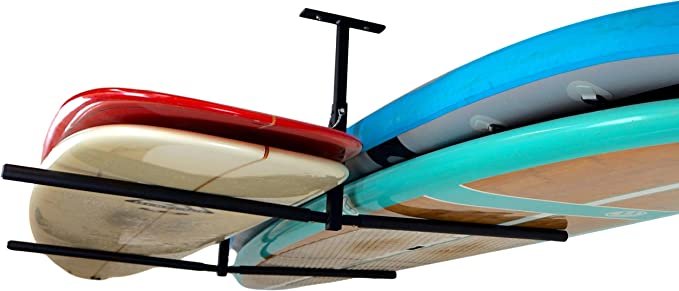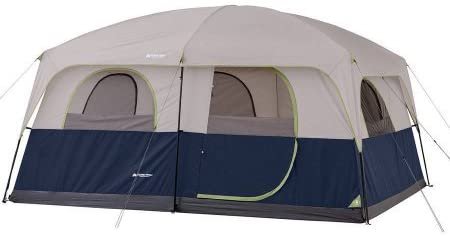What Is Neoprene And Is It Waterproof?

What Is Neoprene?
Neoprene is a synthetic rubber that is made up of polychloroprene, which is a synthetic rubber derived from petroleum. It is a very strong and durable material, making it perfect for use in items such as diving suits, boats, swimsuits, rain jackets, and even athletic equipment.
Neoprene is also lightweight and heat-resistant, meaning it can sustain high temperatures without breaking down. It is therefore commonly used in medical supplies and insulation. Neoprene is resistant to water and oil.
Neoprene is also eco-friendly, as it does not release harmful chemicals when it is burned or recycled.
Waterproof and Water-Resistant Materials
Waterproof and water-resistant materials have become increasingly popular in recent years due to their many benefits. Clothing, shoes, tents, and other items can be ruined by water if not protected.
These materials can protect objects from moisture and water, making them ideal for a variety of applications. There are many different types of waterproof and water-resistant materials available on the market today.
Some of the most popular materials include Gore-Tex, Duck Down, and nylon. It is, however, important to note the difference between the two terms.
Waterproof means that the material will resist damage from water, including penetration and seepage. It is usually measured by a percentage, with 100% meaning that the item will not be damaged by water.
Many clothing items are designed to be waterproof, but some items, such as wallets and backpacks, may not be. The best way to determine whether an item is waterproof is to test it in a controlled environment.
A waterproof material completely hinders the passage of water through it. Some examples of waterproof materials are rubber, silicone, and vinyl.
Water resistance is a measure of how well a material resists water from seeping through it. The higher the water resistance, the better the material will resist water from penetrating it.
Depending on the application, different levels of water resistance are desirable. For example, fabrics that are intended to be washed in a machine may only require a level of water resistance called “water repellency”.
Water-resistant materials only provide a certain amount of protection against water as opposed to waterproof ones. Examples of water-resistant materials are nylon, polyester, and cotton.
Properties Of Neoprene
Neoprene is a synthetic rubber that was first developed in the 1930s and is used in a variety of applications. This material has unique properties that make it an ideal choice for some applications.
Neoprene is strong and flexible, making it a good choice for products that need to be durable and resistant to stretching or stress.
It is also resistant to water and chemicals, making it a good choice for products that need to be resistant to weather conditions or chemicals. The properties of neoprene are enumerated below.
1. Neoprene is heat resistant.
Neoprene is a very strong synthetic rubber that is heat resistant. This is because it has a high heat capacity. Neoprene is therefore very useful where insulation is necessary.
It has many industrial applications, such as in the manufacturing of automobile parts and fishing nets. Neoprene also has several recreational uses, such as motorcycle gloves and swimming fins.
2. Neoprene is waterproof.
Neoprene is a waterproof synthetic rubber. It is often used in diving equipment, advertising signs, and medical supplies.
It is also used in products like condoms and airtight food containers. Neoprene is a durable material that can resist tears and abrasion.
Neoprene is also environmentally friendly because it does not require any chemical treatment or oiling.
3. Neoprene is cold-resistant.
Neoprene is a synthetic rubber made from petroleum. Its unique ability to resist cold makes it ideal for many applications, such as jackets, gloves, and weather protection products.
Neoprene is also lightweight and durable, making it a popular option for clothing and gear.
4. Neoprene is chemical resistant.
Neoprene is a synthetic rubber that is resistant to most chemicals including alcohols, alkalines, mineral acids, some salt solutions, gas, and even petroleum-based mixtures like oils and greases.
It is often used in water and airtight applications because of its chemical resistance. The material is also heat resistant and has good electrical and thermal properties.
5. Neoprene is resistant to outdoor conditions.
Neoprene is a synthetic rubber that has been used in manufacturing products such as balloons and raincoats for many years.
Recently, manufacturers have begun to use neoprene in the production of outdoor sporting goods that require durability and resistance to the elements, such as fishing nets, swimwear, and waders.
Neoprene is resistant to outdoor conditions, which makes it ideal for use in these products. Neoprene is also popular among athletes because of its flexibility, strength, lightweightness, and resistance to moisture.
6. Neoprene works well with other materials.
Neoprene is a thermoplastic elastomer that can be worked with other materials to create products that are both durable and safe.
It has high elasticity, making it a good choice for products that need to stretch, such as masks and gloves. One of its most common uses is as the insulation material for water pipes and other temperature-sensitive applications.
Neoprene also has a low moisture absorption rate, so it is a good material for products that need to be resistant to water and chemicals. Neoprene is often used in conjunction with other materials, such as vinyl, to create products that are durable and resistant to water and weather.
Neoprene also works well with cotton and several metals like aluminum, copper, brass, and stainless steel. In the past, neoprene was not very compatible with other materials, but new techniques have been developed that make it possible to combine neoprene with other materials.
These techniques allow neoprene to be used in products such as composites and foams.
7. Neoprene is environmentally friendly.
Neoprene is a durable synthetic rubber that has been widely used in the manufacture of products such as wetsuits, scuba gear, and air mattresses.
Neoprene is made from oil, natural gas, and other environmentally benign resources. It doesn’t contain phthalates, which are chemicals that can harm the environment. Neoprene is resistant to water and weather damage.
It is also biodegradable, so it breaks down in landfills. In addition, neoprene is a sustainable resource because it can be recycled multiple times.
Uses of Neoprene
Neoprene, a synthetic rubber made from petroleum, has several uses that range from the medical field to sports and electrical use.
It is a versatile material known for its water and temperature resistance, flexibility, environmental friendliness, strength, and durability. The uses of neoprene are given below.
1. Electrical Uses
Neoprene is widely used in the electrical field for a variety of applications. The material is often used in place of other insulation materials, such as foam or fiberglass because it has several advantages.
It’s lightweight and flexible, which allows it to be easily inserted into tight spaces. Neoprene also doesn’t conduct electricity, which makes it an ideal material for use in electrical wires and cables.
It can be as a sealant for electrical connectors and as a gasket for metal-to-metal joints. Neoprene is also resistant to oil and water, making it ideal for use in applications where exposure to these substances is possible.
Neoprene has a high energy density, makes good insulation, and is resistant to heat, chemicals, and abrasion. It is also non-toxic and recyclable.
2. Industrial Uses
Neoprene is a synthetic rubber that has many industrial uses. It is most commonly used in the manufacturing of rubber products, such as hoses and belts, but it is also used in medical equipment and other products.
It is also used in the manufacturing of seals and gaskets because it is strong and durable. Neoprene is also used in underwater breathing equipment and airbags because it is waterproof and breathable.
Neoprene has high-temperature resistance and good chemical resistance, which makes it a popular choice for products that are exposed to harsh environments.
It can also be used in the automobile industry to produce several parts, such as shock absorber seals, belts, hose covers, and vibration mounts.
3. Medical Uses
Neoprene is a synthetic rubber that is used in many medical applications because of its high tensile strength, non-toxicity, and resistance to gas and liquid penetration.
This makes neoprene a popular material for medical devices such as artificial heart valves, catheters, surgical masks, vests, pressure garments, and implants among other things.
Neoprene is also used in medical procedures to create a seal between two objects. Neoprene is resistant to most chemicals and can be recycled multiple times.
4. Production of Safety Equipment
Neoprene is used in many products, including safety gear. It is a strong material that can withstand a lot of wear and tear. It is also resistant to water and chemicals.
Neoprene is often used in products such as gloves, boots, swimming goggles, and helmets.
5. Marine Uses
Neoprene is commonly used in the marine industry for a wide variety of purposes as it is resistant to seawater and environmental pollutants.
These purposes include boat and PMMA manufacturing, oil spill prevention, weatherproofing, and protection from UV radiation.
Neoprene is also often used in conjunction with other fabrics to create hybrid materials that are even more effective at specific tasks.
Disadvantages of Neoprene
Neoprene is a synthetic rubber made from petroleum that has many advantages over traditional rubber materials. It is extremely durable, can be formed into any shape, and is resistant to environmental extremes.
It is also strong, stretchy watertight, and resistant to chemicals and sunlight However, neoprene has several disadvantages that should be considered when selecting this material for a project.
- Neoprene is not as elastic as natural rubber. This can affect the flexibility and resilience of a product made from neoprene.
- It can be difficult to clean because of the chemical composition of the material. While it is easily washable by hand, the setting of your washing machine should be checked to make sure it matches neoprene requirements before washing.
- It can be a choking hazard if it gets into your mouth or nose. This is not much a disadvantage of neoprene as it is inedible. You should be careful with neoprene materials, especially in children’s hands so you don’t choke.
- Neoprene can cause skin irritation if it gets wet and stays wet for a long time. Ensure the neoprene is out of water when not in use and stored in a cool dry place.
- Neoprene is not as strong as natural rubber which might negate its other strengths in some instances.
Neoprene is waterproof. It can be worn in wet environments without fear of the material becoming waterlogged and heavy. This makes it perfect for activities such as swimming, diving, and kayaking.
Neoprene is also durable and can withstand a great deal of wear and tear. It is also useful in other industrial sectors for making machine parts, insulators, and waterproof material among other things due to its flexibility, temperature resistance, and durability.
Because of its many benefits, neoprene is a popular choice for sportswear and outdoor gear.
Frequently Asked Questions
How Waterproof Is Neoprene?
Neoprene is a type of rubber that is resistant to water and chlorine. It is often used in swimsuits, raincoats, and other clothing items. Some people claim that neoprene is not very waterproof, but others say that it is.
In actuality, neoprene is entirely waterproof, which is why it is used in the production of so many waterproof materials. Despite being waterproof, neoprene’s water-resistant abilities, like all things, decline with time and use.
Keep in mind that you should always test a product’s waterproofness before using it in the rain or other wet environments. This is to prevent avoidable nuisances and delays.
How long will neoprene remain waterproof?
Neoprene, a polymer made from synthetic rubber, is often used in products that need to be waterproof like swimwear and other water-repellent products. While neoprene is waterproof, this state does not last forever.
Continued exposure to moisture can cause the neoprene to stretch and eventually lose its waterproofing ability. Several factors can affect the waterproofing ability of neoprene, including how often it is washed and how much moisture it picks up.
Most companies that sell neoprene materials offer a warranty of one year which is the time during which the material is expected to be completely waterproof. After this guarantee, a decline is expected in the water-resistant abilities of the neoprene material.
While neoprene’s warranty is one year, it generally functions quite well as a waterproof material for some more years before needing to be replaced. How often the material is exposed to the elements and the care it receives naturally play a significant role in how long the material lasts.
Is neoprene toxic?
Neoprene is a synthetic rubber that is often used in water sports and other activities where it is necessary to protect the user from water.
Some people have raised concerns about neoprene’s potential toxicity, and some research has suggested that it may be harmful.
However, there is currently no evidence that neoprene is truly toxic, and it is generally considered safe to use.
While neoprene itself is not labeled as toxic, the gases released in its production can be hazardous, once again reinforcing that industries should be located far from residential areas.
Is neoprene inflammable?
Porous neoprene is often used in products that are potentially harmful if exposed to fire, such as inflatable boats and life jackets.
However, recent studies have raised concerns that neoprene may be an inflammable material; neoprene was found less flammable than other commercial rubber materials, and their fires can easily be extinguished.
Although neoprene fires are rare, they could potentially cause extensive damage if they occur. Manufacturers should take these studies into account when designing products that contain porous neoprene, and consumers should be aware of the potential dangers before using them.
Fortunately, as with all synthetic materials, neoprene should be handled with care and stored in a cool, dry place to minimize the risk of fire.
Is neoprene breathable?
Neoprene is a synthetic rubber that has been used in clothing, shoes, and other items for many years.
It is often considered to be a breathable material, but this is not always the case. Some neoprene materials are not breathable at all and can cause humidity and heat buildup inside of clothing or equipment.
Traditional neoprene for instance is not breathable. Amends have been made and breathable neoprene is now produced in many a place. This means that athletes who wear neoprene clothing should not experience any discomfort or overheating.
It is important to choose a neoprene material that is breathable if you want to stay cool and comfortable during outdoor activities.
Is neoprene carcinogenic?
Neoprene is a synthetic rubber that is commonly used in water and airtight applications. Some scientists are concerned that neoprene may be carcinogenic, as it has been linked to cancer in rats.
However, there is still much research to be done before we can say for certain whether or not neoprene is carcinogenic. Until then, consumers should use caution when using neoprene products and avoid exposure to high levels of the material.
Can you use neoprene in the water?
People often wonder if neoprene can be used in water because of its strong rubber smell. However, when neoprene is submerged in water, the rubber smell dissipates.
The material is resistant to bacteria and fungus, so it can be used in both fresh and salt water. Neoprene can also be used in colder water as it doesn’t freeze.
It is resistant to oil and gas, chemicals, and UV light. There are many applications for neoprene, including diving suits, buoys, life jackets, and aquatic devices.
Wearing neoprene while swimming can help you stay cooler and more comfortable in hot weather.






